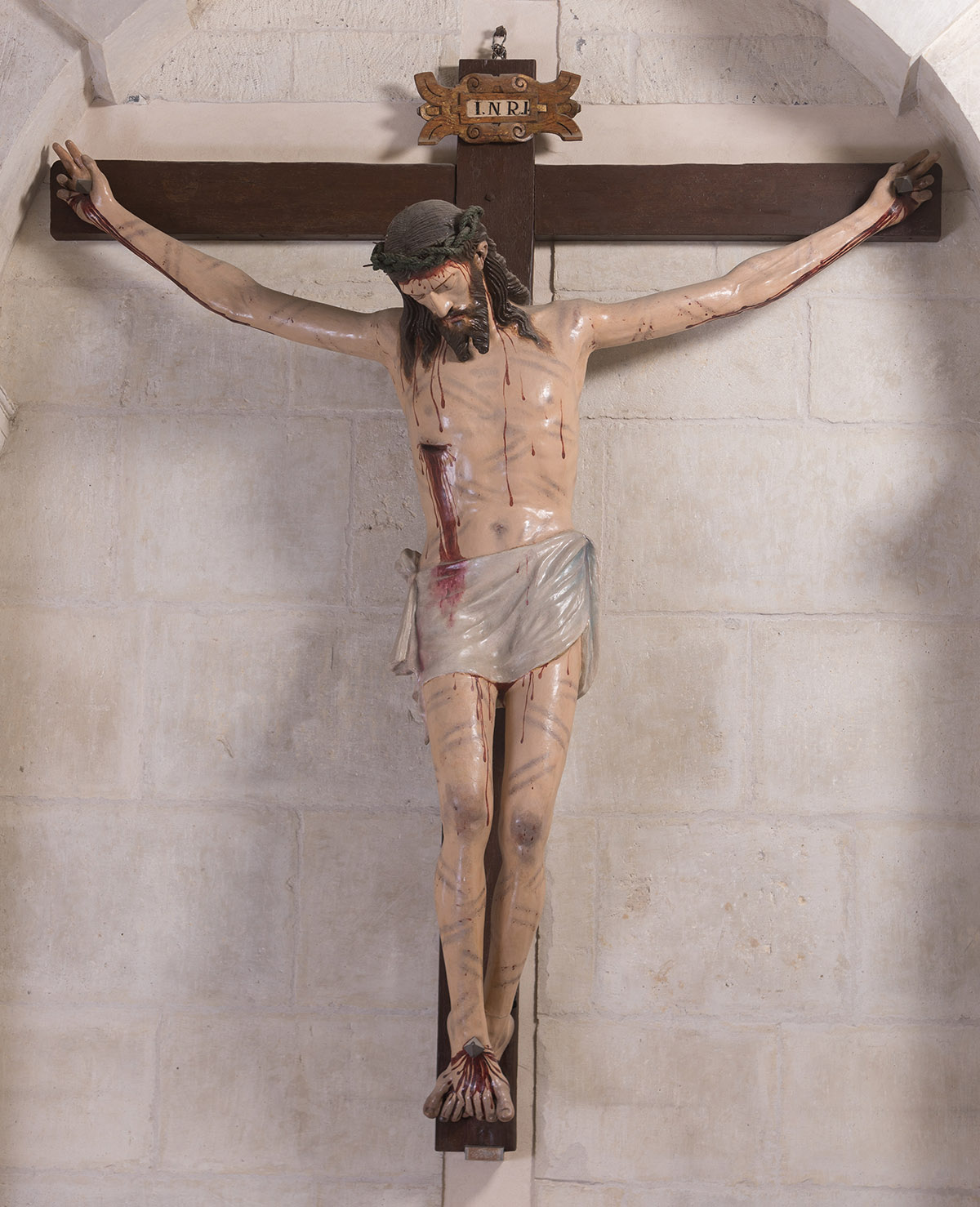Mexican Crucified Christ
Mexican Crucified Christ
This interesting cane image must have been produced around 1580. It is a light New Spanish sculpture made of corn pulp and cane, vegetable fibres and glued cloth. The technique originated in pre-Hispanic Mexico and was assimilated by Spanish colonisers, thereby enhancing the fusion of these two cultures. Professor Pablo Amador considers it to be from the “workshop of the great Christs”, sharing important anatomical similarities to the crucifixes found in Sanlúcar and Gran Canaria. It adapted very well to processional images because of its lightness, which facilitated its popularisation in Spain. The life-size Christ is nailed to a plain cross with a cartouche and inscription (INRI). He is shown deceased, with his eyes half-closed, his mouth half-open and his head tilted to one side. His hair falls down to his shoulders, and he has his characteristic forked beard. He wears a crown of thorns, which was added at a later date, and a cloth of purity draped around his body. His somewhat retouched flesh displays marks of martyrdom, with abundant blood and bruises all over his body.
We do not know the exact date when it arrived at the collegiate church, but it was most likely sent from Seville by Pedro López de Alday towards the end of the 16th century. It first occupied the north wall of the Chapel of Saint Prudentius until it was later moved around the 1660s to preside over the Chapel of the Holy Christ, whose patrons were the Galarreta brothers. It was already located in a small altar designed by the architect Roque Rubio from Vitoria by 1775.
Locution
Ficha técnica
BASIC BIBLIOGRAPHY
BARTOLOMÉ GARCÍA, Fernando R. “Fundación y patronato de los Alday y Galarreta. Las capillas de San Prudencio y Santo Cristo en la catedral Santa María de Vitoria-Gasteiz”, Ars Bilduma, nº 0, 2010, pp. 14-39.
VALVERDE LARROSA, Consuelo; MARTÍN GARCÍA, Juan Carlos. “Estudios radiográficos de tres de los grandes Cristos de caña de maíz identificados en España: el Cristo crucificado de Lerma (Burgos), el Cristo de Santa María de Vitoria-Gasteiz (Álava) y el Cristo de la buena muerte de Gran Canaria (Gran Canaria)”. Intervención, 12, 2015, pp. 39–52. https://doi.org/10.30763/Intervencion.2015.12.144
AMADOR MARRERO, Pablo F., Imaginería ligera novohispana en el arte español de los siglos XVI y XVII. Las Palmas de Gran Canaria, Universidad de Las Palmas de Gran Canaria, 2012, pp. 292-295, 636-638. https://accedacris.ulpgc.es/handle/10553/16872


